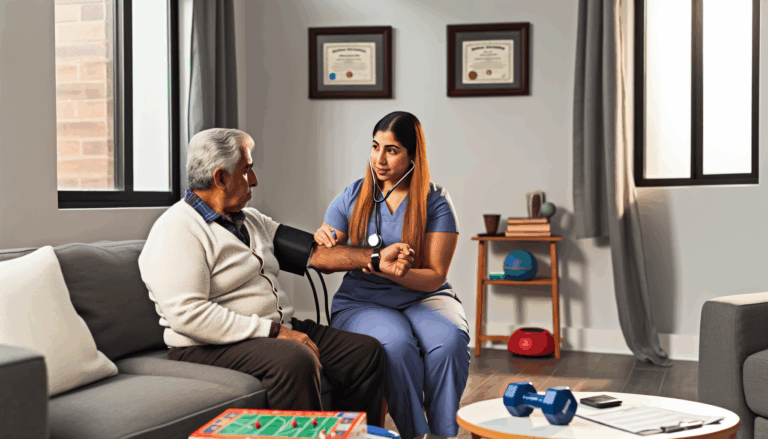Making Home Health Care More Comfortable: Tips and Strategies
Home health care brings numerous benefits for patients, including comfort, convenience, personalized care, and familiarity with the environment. However, it’s crucial to ensure that patients can truly enjoy these advantages by making their home setting as conducive as possible to their health and well-being. In this article, we will share practical tips and strategies to make home health care a more comfortable and positive experience.
1. Creating a Healthy and Safe Living Environment
When it comes to home health care, the first step to ensuring patient’s comfort is creating a healthy and safe living environment. This could encompass various factors such as cleanliness, safety measures against accidental falls, and ensuring good air quality.
- Cleanliness: Regularly clean and sanitize the home to prevent the spread of pathogens. Particularly pay attention to high-touch surfaces like doorknobs, handrails, and electronic devices.
- Safety: Install safety features such as handrails in hallways and bathrooms. Remove tripping hazards like loose rugs. Ensure proper lighting to avoid accidental trips and falls.
- Air Quality: Maintain good air quality is essential, especially for patients with respiratory conditions. Air purifiers or houseplants that purify the air can be beneficial.
2. Personalizing Patient’s Space
Personalization can boost comfort and satisfaction. Surrounding patients with personal items like family photos, favorite bedding, or familiar trinkets can enhance their mood and outlook.
3. Mental Well-being and Recreation
Home health care is not only about physical health. Mental well-being is equally significant. Ensuring relaxation, stress relief, and brain-stimulating activities are vital for holistic health.
- Relaxation: Incorporate relaxation activities into their routine like listening to soothing music or practicing mindfulness.
- Stimulating Activities: Engage patients with brain-stimulating activities like puzzles, books, or arts and crafts.
- Social Interaction: Encourage interaction with family, friends or community members. This prevents feelings of loneliness and isolation.
4. Ensuring Adequate Nutrition
A nutritious diet is vital for patients receiving home health care. Prepare healthy meals according to their dietary requirements and preferences. This is a powerful way to ensure they obtain the necessary vitamins and minerals required for recovery and well-being.
Ultimately, making home health care more comfortable entails focusing on all aspects of the patient’s life. A comfortable, safe, and stimulating environment can help patients respond better to treatment, recover faster, and lead a more fulfilling life.
Remember, everyone’s needs and preferences are different. Tailoring the environment and care routines to suit each individual can ensure they gain maximum benefit from home health care.



